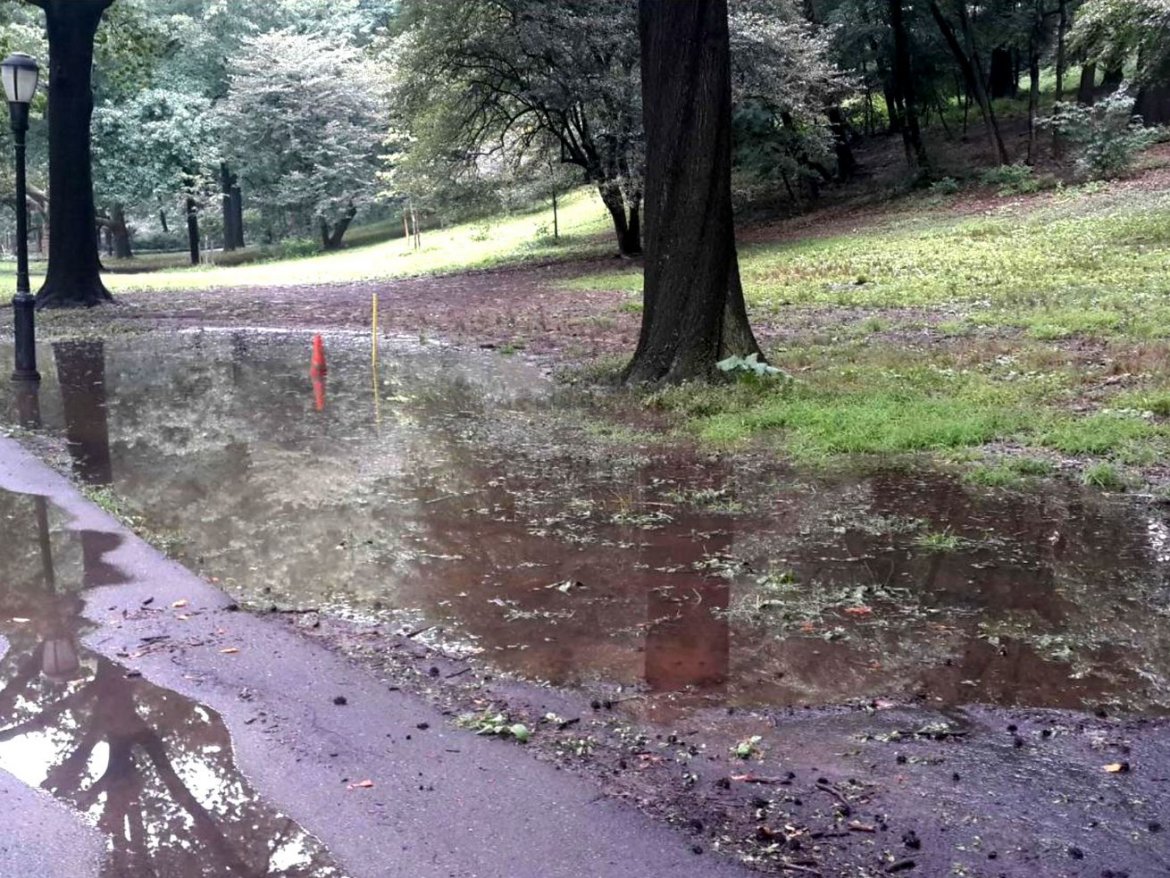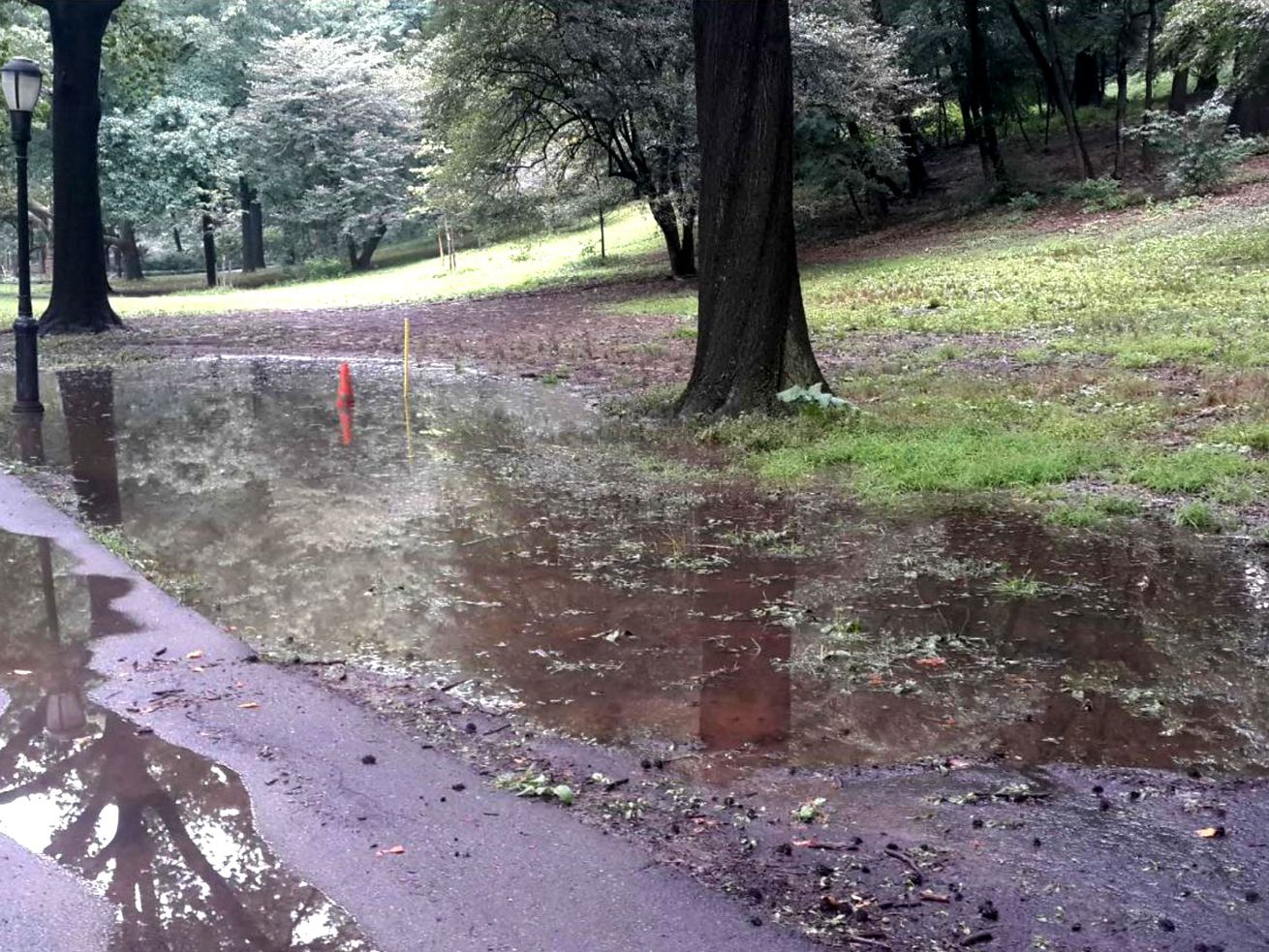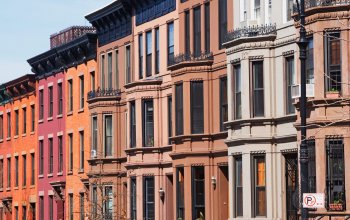
NYC will finally fix Riverside Park’s persistent flooding problems

 Riverside Park is plagued by drainage issues. | Courtesy of NYC Parks
Riverside Park is plagued by drainage issues. | Courtesy of NYC Parks
The Olmsted-designed park’s drainage system dates back to the 1930s
When New Yorkers visit Riverside Park, they’re usually eager to lounge on the greenery and soak in waterfront views of the Hudson River. But thanks to the park’s 1930s era drainage infrastructure, those signature sloping hills are sopping up problematic amounts of rainfall that create makeshift marshes and transform staircases into waterfalls after heavy rains.
Now, after years of local advocacy, the city will invest $11.5 million to study and repair chronic drainage issues within the four-mile park, NYC’s Parks Department announced Thursday. The effort will prioritize the area between 108th and 116th streets, where flooding is most severe. NYC Parks Commissioner Mitchell Silver said the effort “will significantly improve the drainage systems and increase the park’s storm water capacity.”
This winter, the Parks department will issue a Request for Proposals (RFP) for an engineering consultant to study the park’s ailing stormwater drainage systems and design solutions. That study will be conducted the summer of 2020, and work to upgrade the infrastructure is expected to begin in 2022.
The project marks the first major investment in the park’s drainage system since its conception, and is emblematic of similar issues at deteriorating parks across the five boroughs. In a 2018 report on aging infrastructure within city parks, the Center for an Urban Future estimates that over the coming decade the city must invest $5.8 billion in parks to ensure existing maintenance challenges don’t spiral into a full scale crisis.
The average city park is 73 years old; waterfront facilities in parks—piers, marinas, and docks—are, on average, 76 years old. Yet, for decades, too few dollars for basic maintenance and too few staff are in place to ensure problems are addressed before they worsen.
Mayor Bill de Blasio has made some strides in addressing these issues with the launch of the Community Parks Initiative and Anchor Parks Initiative, which have directed hundreds of millions toward improving systemically underfunded parks. NYC Parks has also recently begun its first-ever needs assessment of its entire portfolio. While promising, green space advocates note that the assessment isn’t expected to be complete for another 20 years, which they argue is an unacceptable timeframe for data that is key for future planning.
Drainage systems rank high on the list of capital needs with the invisible but crucial systems providing the important service of collecting and carrying away surface rainwater to prevent flooding. When these complicated systems break down, sports fields, running paths, and picnic spaces wind up submerged, sometimes for days at a time, and swaths of parks can become unusable.
Retaining walls—structures that literally prop up parks and hold back the weight of the surrounding environment—are some of the oldest and most important infrastructure in parks. When they erode, their decay can have catastrophic results on things like drainage, according to the Center for an Urban Future’s report. Riverside Park, it’s worth noting, has a retaining wall slated for major repairs.
There are, of course, myriad factors that go into the laundry list of problems aging parks face. Riverside Park’s natural geography also contributes to its flooding problems, according to NYC Parks’ 2016 masterplan to overhaul the green space. Due to its low elevation, stormwater surges into the park at the 115th Street entrance from neighboring sloped streets. Instead of actually going into the park’s drainage system, that liquid has the tendency to pool on paths and in lawns.
Local park advocate have for years called on the city to develop solutions, fearing that the chronic flooding could eventually impact an Amtrak tunnel that runs under the park, and called Thursday’s announcement a vital step on a path toward sorely-needed improvements.
“Riverside Park’s infrastructure has deteriorated significantly over decades, and this new investment is critically important to lift up one of the city’s most important public spaces,” Riverside Park Conservancy president Dan Garodnick said in a statement.
Love where you live
Be Heard at Go Home NY
Be heard! Leave your apartment, condo, and coop building reviews at Go Home NY! Know a building's managers are awful? Have the inside line on a perfect building? Anything in between? Express your voice and be heard. Leave a review at Go Home NY.


